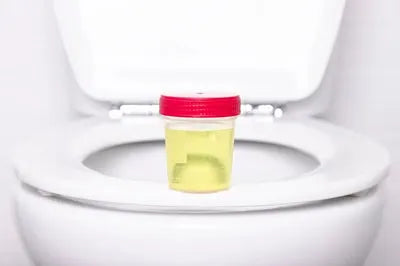Adjusting to life after prostate cancer surgery can take time. For many men, the emotional impact of what they’ve been through doesn’t hit home until they’ve finished their treatment. For others, managing the physical side effects is their immediate focus.
Although prostate cancer surgery is lifesaving, it takes a huge toll on your body and its functions. For some, the fact that they are incontinent may come as a shock, even if it may be only temporary.
Let's see how to deal with urinary incontinence after prostate gland surgery.
What is urinary incontinence?
Urinary incontinence is the loss of the ability to control urination. This is a common outcome of certain prostate cancer treatments such as radiation or surgery such as prostatectomy. There are three main types of urinary incontinence:
Stress incontinence: You experience urine leaks when you do physical activities that put pressure on your bladder, such as coughing, laughing, or lifting something heavy.
Urge incontinence: You experience sudden and intense urge to urinate, followed by an involuntary loss of urine.
Mixed incontinence: You experience both stress and urge incontinence.
How can prostate cancer surgery cause incontinence?
Before we see how prostate cancer surgery causes incontinence, we must first understand how the bladder stores and releases urine.
The bladder is like a storage tank that holds your pee until you're ready to go. When it's full, it sends a message to your brain, letting you know you need to pee. When you're ready to go, your brain tells your bladder to squeeze, pushing the pee into a small tube called the urethra. At the same time, your brain signals the muscles around the urethra – the sphincter muscles – to relax, letting the pee pass from the bladder to the urethra. The pelvic floor muscles also help with this process by supporting all the organs involved in peeing.
Since the prostate gland sits directly beneath the bladder and very close to the muscles around the urethra, any surgery or radiation to this area can affect the process of urination.
Common causes of urinary incontinence after prostate cancer surgery
There are several common causes of urinary incontinence after prostate cancer surgery, including damage to the sphincter muscles, nerve damage, and bladder spasms.
Damage to the sphincter muscles
The sphincter muscles are responsible for controlling the flow of urine from the bladder to the urethra. During prostate cancer surgery, these muscles may be damaged or weakened, leading to difficulties in controlling urination. Any damage to the sphincter muscles can result in stress incontinence, or leakage of urine when pressure is applied to your bladder.
Nerve damage
The nerves are responsible for sending signals between the brain, the bladder, and the sphincter muscles, managing the timing and control of urination. If these nerves are damaged or disturbed during surgery, it can lead to urinary incontinence. Now it’s worth noting that nerve damage can be either permanent or temporary, and certain lifestyle changes and strategies can help you get back in shape.
Bladder spasms
Bladder spasms are sudden, involuntary contractions of the bladder muscles that can cause a strong and urgent need to urinate. After prostate cancer surgery, the bladder muscles may become overactive, or very sensitive, and contract unexpectedly causing urinary incontinence.
Diagnosis of Urinary Incontinence after Prostate Surgery
The diagnosis of urinary incontinence after prostate surgery typically involves a thorough physical examination and a detailed review of the patient's medical history.
But in addition to the physical examination, your doctor may order several diagnostic tests to calculate the extent and underlying causes of your urinary incontinence. These tests may include:
Urinalysis
A urine sample is analyzed to check for signs of infection, inflammation, or other abnormalities that may be causing urinary incontinence.
Uroflowmetry
This test measures the rate and volume of urine flow as the patient empties their bladder into a special device. Uroflowmetry helps to assess the strength and coordination of the muscles involved in urination and can provide valuable information about the patient's urinating pattern.
Post-void residual volume test
After the patient has emptied their bladder, this test measures the amount of urine that remains in the bladder.
Cystoscopy
This is a minimally invasive procedure that involves inserting a thin tube with a light and camera (cystoscope) into the urethra to visually examine the bladder and urethra.
Based on the findings of these tests, your doctor will develop a personalized treatment plan to manage and improve your urinary incontinence.
Treatment Options for Urinary Incontinence after Prostate Surgery

When it comes to managing urinary incontinence after prostate surgery, there are several treatment options available.
Conservative treatments
These are non-invasive and non-surgical options for managing urinary incontinence.
Pelvic floor exercises (Kegel exercises)
These exercises involve contracting and relaxing the muscles of the pelvic floor, which can help strengthen and tone the muscles that control bladder function and reduce urine leakage.
Bladder training
Bladder training involves following a regular voiding (bladder emptying) schedule and gradually increasing the time between voids to help improve bladder capacity and control.
Medications
Depending on the type and severity of urinary incontinence, medication for incontinence after prostate surgery may be prescribed. These may include alpha-adrenergic blockers and anticholinergic medications, which can help relax bladder muscles, improve urinary flow, and reduce urine urgency and frequency.
Medical devices and products
These are non-surgical devices that can be used to manage urinary incontinence. They can include devices such as:
Penile clamps
Penile clamps are devices that can be placed around the penis to compress the urethra and prevent urine leakage. They work by applying pressure to the urethra, effectively closing it off and preventing urine from escaping.
External catheters
External catheters, also known as condom catheters, are sheaths that are placed over the penis to collect urine in a bag attached to the leg or abdomen. They work by directing urine away from the skin and into a collection bag, reducing the risk of skin irritation and discomfort.
Adult incontinence diapers
Adult diapers provide a convenient way to manage incontinence by containing urine and preventing embarrassing leaks. They can be worn under clothing and come in various sizes and absorbency levels to fit individual needs. If you’re looking for good quality diapers, you should give Friends Adult Diapers a try.
Surgical treatments
These are invasive procedures that may be considered for more severe cases of urinary incontinence that do not respond to conservative treatments.
Sling procedures
These involve placing a supportive mesh or sling under the urethra to help provide additional support and improve urinary control. The sling acts like a hammock, supporting the urethra and preventing urine leakage. Sling procedures are typically minimally invasive and can be done as outpatient procedures with a comparatively short recovery time than other surgical treatments.
Artificial urinary sphincter implantation
This involves surgically implanting a device that can control the flow of urine by compressing the urethra. The artificial urinary sphincter consists of a cuff that is placed around the urethra, a pump that is implanted in the scrotum, and a reservoir that is placed in the abdomen.
When the patient needs to urinate, they can use the pump to deflate the cuff and allow urine to flow. After voiding, the cuff is automatically inflated again to prevent urine leakage.
Bladder neck suspension
This procedure involves re-positioning and securing the bladder neck, which is the area where the bladder and urethra meet, to provide additional support and improve urinary control.
Managing Urinary Incontinence after Prostate Surgery
Doesn’t matter if the effects of prostate surgery result in permanent or temporary urinary incontinence, with the right approach, your incontinence can be effectively managed and improved.
Lifestyle changes
Lifestyle changes refer to modifications in diet, fluid intake, and regular exercise that can help manage urinary incontinence.
Diet modifications
Avoiding foods and drinks that are known to irritate the bladder, such as caffeine, alcohol, spicy or acidic foods, and carbonated beverages, can help reduce bladder irritation and minimize urinary leakage. Including foods that promote bladder health, such as fruits and vegetables rich in antioxidants, can also be beneficial.
Fluid management
Managing fluid intake involves drinking adequate amounts of water throughout the day to maintain hydration. However, avoiding excessive fluid intake close to bedtime to help reduce the frequency of nighttime urination, which may contribute to incontinence.
Regular exercise
Engaging in regular physical activity, including pelvic floor muscle exercises (Kegel exercises), can help strengthen the muscles that play a key role in urinary control. Regular exercise can also promote overall health and well-being, which may positively impact urinary continence.
Psychological coping strategies
Urinary incontinence can take a toll on an individual’s emotional and psychological well-being. Psychological coping strategies involve techniques and interventions that focus on managing these challenges.
Support groups
Interacting with others who share the same experiences as you can help normalize the condition, reduce feelings of isolation that comes with it, and provide a sense of community. Joining a support group can also provide practical advice and strategies to managing incontinence.
Mindfulness meditation
Practicing mindfulness techniques, such as deep breathing, relaxation exercises, and meditation, can help reduce stress and anxiety, which may worsen urinary incontinence. Mindfulness techniques can also help improve awareness and control over bladder sensations, reducing the urge to urinate and manage leakage.
It's important to note that lifestyle changes and psychological coping strategies are paired approaches that can be used in combination with other treatment options, such as medical devices or surgical interventions, as recommended by your doctor. The goal is to develop a complete treatment approach that addresses the physical, emotional, and psychological aspects of managing urinary incontinence after prostate surgery.
In conclusion, while urinary incontinence after prostate surgery can be challenging, it's important to remember that there are numerous options for managing and improving this condition. From lifestyle changes to psychological coping strategies, as well as medical devices and surgical treatments, there is hope for effectively managing urinary incontinence and regaining a sense of control and confidence in your daily life again.
Don't hesitate to seek support from your doctor or loved ones, join support groups, and explore different coping strategies. Remember, you are not alone, and with the right strategies and mindset, you can overcome the challenges of urinary incontinence and lead a fulfilling and enjoyable life. You've got this!
FAQs about Urinary Incontinence after Prostate Cancer Surgery
1. Is incontinence permanent after prostate removal?
Urinary incontinence after prostatectomy or prostate removal surgery, also known as radical prostatectomy incontinence, can be temporary or permanent. The extent and duration of incontinence can vary among individuals and depend on various factors such as the surgical technique used, the overall health of the individual, and the recovery process.
2. How long does incontinence last after prostate cancer surgery?
The duration of incontinence after prostate cancer surgery can vary from person to person. In many cases, it can take several weeks to months for urinary control to gradually improve after surgery.
3. Is incontinence common after prostate surgery?
Yes, incontinence is a common side effect after prostate surgery, with a significant percentage of men experiencing some degree of incontinence, although severity and duration may vary.
4. How do you stop incontinence after prostate surgery?
Strategies to manage and improve incontinence after prostate surgery may include conservative treatments like exercises and medication, medical devices like clamps or pads, or surgical options such as bladder neck suspension or artificial urinary sphincter implantation. Speak to your doctor to find out the best solution for you.
















